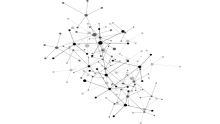People-centric vs. Commercial approach to HiPos
HiPo Week Read similar articles

It’s a well-established fact that high potentials are the backbone of any organization’s future success but it is also true that organizations approach HiPos in different ways depending on their functional types. As Bijay Sahoo, President - HR at Reliance Jio Infocomm says, “HiPos are important for any business but people-centric organizations look at more of a nurturing approach which is mostly medium to long-term. It is possible that some organizations may be taking a tactical approach of “buying the leadership talent” as against “growing one’s own leaders.”
With these two different approaches, the high potential programs laid out by these organizations differ in terms of duration, focus areas, competencies, values instilled and even offered exposure. “In a people-centric organization, you look at the holistic aspects of a HiPo. For example, in a customer-centric company one would look at how the HiPo deals with customer services, providing business solutions to the customers and his overall knowledge skills and attitude. The focus is more towards the behavioural aspect, analysing how he is growing into a business and people leader from a technical leader. On the other hand, in case of an asset-centric organization you start inculcating in them the greater power of analytics and the ability to take quick and practical commercial decisions. Such skills are provided through on-the-job exposure, training, coaching or sometimes allowing them to participate in relevant international or national seminars,” says Sahoo.
High potentials may be treated differently in different setups but one thing that should always be considered for any high-potential program is that it should have a nurturing approach in completeness and not just be tactical alone. It not only ensures the success of a HiPo program, but it also makes sure the high potentials themselves stay motivated at all times.
Structured approach and an intuitive or unstructured approach are the other two approaches of dealing with high potentials. Both have their own pros and cons but it has been observed that in most cases, in a structured approach, it is easier to measure the ROI on a HiPo program. Whereas, in an unstructured approach, it is mostly chance based and depends a lot on the understanding and judgement of line managers or the immediate seniors of the high potentials.
Highlighting the benefits of a structured high potential program, Sahoo says, “In a structured program you can be sure of the outcome, as you know the process well, while in an unstructured program it is ad hoc. In a structured program it becomes easy to replace from within, in case you lose a leadership talent and since that can be done, there is hardly any loss of revenue, customers or productivity and there is no cultural discontinuity”.
Be it a people-centric or an asset-centric organization, a balanced nurturing and a tactical approach coupled with a structured high potential development program goes a long way in ensuring a healthy leadership pipeline. A lot of organizations might have been following the intuitive way and might have successfully chosen their HiPos in the past, but organizations today are changing paths and taking the more planned and structured road to developing their high potential, minimizing the chances of missing out on any of their best talent.







